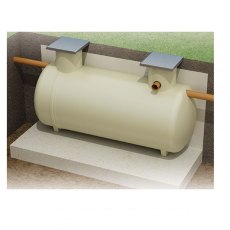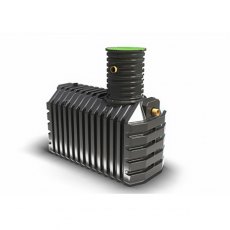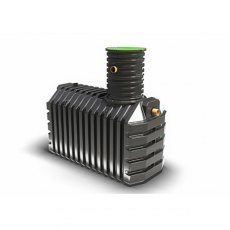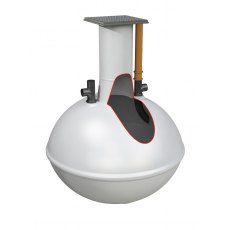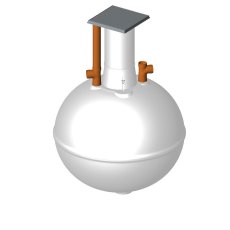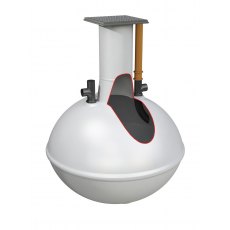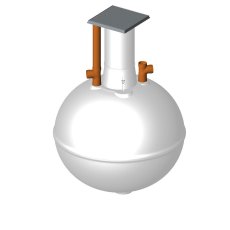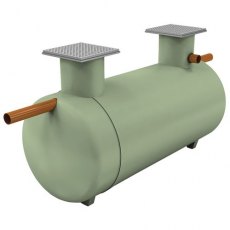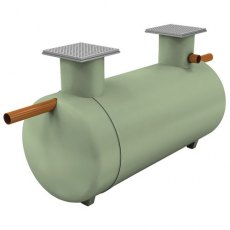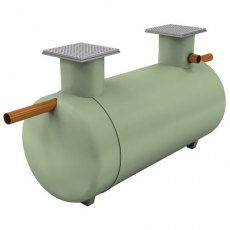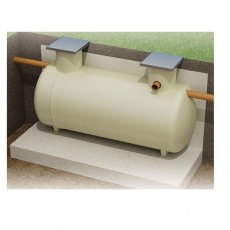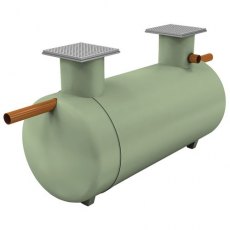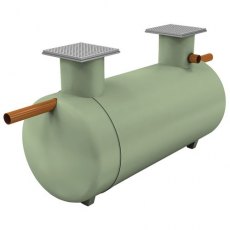Septic Tanks
How a septic tank system works
Wastewater enters the septic tank through the inlet pipe. Heavy waste sinks to the bottom and lighter waste floats to the top, while the effluent remains between these two layers. As more and more waste flows into the septic tank, the effluent is pushed through the outlet pipe into a closed network of perforated pipes, filtering through the bed and into the soil below. We know the importance of using high-quality septic tanks and only stock brands we trust, including Klargester and Clearwater.
How often does my septic tank need to be emptied?
Your septic tank will need to be emptied periodically to remove the sludge that builds up over time. The frequency will depend on the number of people using the system, but it’s usually done every six to twelve months. Items such as nappies and sanitary towels will quickly clog your septic tank (and most other waste treatment systems) so dispose of these with your rubbish rather than flushing them. Fat and grease can also create build-up in the pipes and septic tank. The system relies on a delicate ecological balance, so be careful about introducing hazardous chemicals into the system, such as varnish or paint thinners. A reasonable amount of domestic cleaning products or household detergents will be fine.
Septic Tanks FAQs
Due to the new regulations, do I need to upgrade to a Sewage Treatment System?
Under Environment Agency Septic Tank General Binding Rules, if your septic tank discharges into surface water, like a stream, river, ditch, surface water drain etc., it should have been replaced with a full sewage treatment plant by the 1st January 2020. By not carrying out the replacement, you could be liable to a hefty fine.
At Tanks Direct we stock a wide range of sewage treatment plants from leading manufacturers including Klargester Biodisc, Klargester Biotec and Harlequin Hydroclear. A sewage treatment plant removes contaminants from wastewater using the growth of bacteria to break down the sewage. They produce cleaner and more environmentally friendlier effluent. Domestic sewage treatment plants are the perfect alternative when it isn’t legal to have a septic tank.
How will I be able to tell that my septic tank is full?
Recognising signs early that your septic tank is full and in need of emptying is essential to maintaining the health of your septic tank system. One noticeable sign that your septic tank may be getting full is slow drainage throughout your plumbing fixtures. You might notice that sinks, showers, and toilets are slower to drain than usual. Water may back up or gurgle in drains, indicating that your septic system is struggling to handle the volume. As the tank fills, it has less capacity to contain and treat the waste properly, so you may notice foul odours in and around your property. The most inconvenient and obvious sign of a full septic tank is sewage backups inside your home. If toilets or drains are consistently backing up or becoming clogged, it's a clear indication that your septic tank is overloaded and needs immediate attention.
Another indicator is a vibrant, lush patch of grass or vegetation over your drain field. When the tank reaches its capacity and cannot properly process wastewater, the excess effluent may fertilise the surrounding soil, causing grass and plants to thrive more than usual. Standing water or soggy areas in your garden, especially around the septic tank or drain field, can also signal that your septic tank is full or experiencing issues. This pooling occurs when the tank is unable to absorb and distribute wastewater efficiently. If you notice these wet areas persisting, it's essential to address the situation promptly to prevent further damage to your septic system.
Can rainwater go into septic tank?
Rainwater must not enter your septic tank. Make sure that the downpipes and drains that carry rainwater are not connected to your septic tank. Your tank is sized to deal with a specific volume of wastewater – ensuring the sewage remains in the septic tank long enough for all the solid waste to settle at the bottom. If rainwater enters the tank, the flow rate increases, and adequate settlement does not occur. As a result, the effluent would contain so many suspended solids that it would very quickly compromise the soakaway, and the contents of the tank will be washed out before they’ve been broken down, causing pollution and health hazards. Septic tanks and sewage treatment systems must only be connected to grey and black water drains, such as toilets, sinks, showers, baths, washing machines, and dishwashers. If you’re looking to manage rainfall and surface water, consider installing a rainwater harvesting system.
Septic tanks vs cesspools, which is best?
A cesspool (sometimes called a cesspit) is just a holding tank for wastewater. It only has one pipe connection fitted, that lets the waste into the tank. There is no treatment of the waste, so the sewage just builds up in the tank and needs to be emptied by a sewage disposal tanker every month or so (depending on how big the cesspool is and how many people are using it).
A septic tank is a step up from a cesspool. A septic tank has two pipe connections - one for the inlet, that lets wastewater in, and an outlet, that discharges treated wastewater into a soak away. Like a cesspool, a septic tank will need to have sludge emptied by a disposal tanker, but not at the rate of a cesspool. Septic tanks are a much better and cleaner sewage system. They treat the waste, so it can safely interact with our environment and require emptying less often, saving you money.
How long do septic tanks usually last?
Septic tanks, when properly maintained, can serve you well for several decades. A well-constructed septic tank can last anywhere from twenty to forty years or even longer, making it a worthwhile investment for your property. But to maximise the lifespan of your septic tank, you should schedule routine inspections and emptying. This preventative maintenance helps remove accumulated sludge and scum, preventing them from clogging the system and causing damage. Neglecting these maintenance tasks can drastically reduce your septic tank's lifespan, leading to costly repairs or replacements sooner than expected. You should avoid flushing non-biodegradable items, excessive grease, or chemicals down the drain, as these can harm the system and lead to premature deterioration. Educate yourself and your household on septic-friendly practices to ensure your system remains in good working condition for many years to come.
The type of soil and climate in your area may also impact the lifespan of your septic tank. In areas with dense clay soils, for instance, the tank may fill up faster. Harsh weather conditions can also affect the tank's structural integrity, so it's essential to take these factors into account and adapt your maintenance schedule accordingly.
What is the best type of septic tank for a house?
A septic tank is the first stop for the wastewater that leaves your home. The waste is held in the tank, where it goes through the process of separating the solids from the liquids before filtering water into your drainage field. The best type of septic tank for your house will depend on several variables – from your property’s square footage to the number of bedrooms and number of people using the system.
The larger your house, the larger septic tank you’ll probably need. And the more occupants in your home, the bigger the tank you’ll need. A small septic tank will probably suffice if you only have two people living in your property – but if you have a large family, of five or more people living in your home, you’ll need a larger septic tank to manage all the household waste hygienically and effectively.
It's also important to consider the following: Do you have two kitchens? Or multiple bathrooms and ensuites? Do you have, or plan to have, a hot tub or a swimming pool? All of these will increase the demand on your septic tank.
How do onion septic tanks work?
There are three types of septic tanks: the more traditional masonry-built pits, Low profile units or modern fibre glass units, often referred to as “onions”. Regardless of their type, septic tanks all function the same way. There is a settlement tank where the sewage and waste is held for a length of time, while naturally-occurring, waste-degrading bacteria breaks down the organic matter in a process called anaerobic decomposition. The final effluent from the septic tank is then drained into an underground soak away system.
In an onion shaped septic tank, the tank is split into three vertical segments. Wastewater enters the septic tank’s first chamber and is held there. This gives the waste material time to separate, with solids and sludge settling at the bottom of the tank and other lighter waste floats to the top. The naturally occurring aerobic (waste-degrading) bacteria breaks down the waste in the tank, reducing the volume of solid waste. The liquid in-between flows through into a second and third chamber, where further settlement occurs. Finally, the effluent exits to the soak away on the other side of the tank.
It is important to ensure your soak away is an adequate size to efficiently handle the volume of effluent from your septic tank.
How to Discharge Waste from Septic Tanks
There are 3 options available:
(1) Connect to a main sewer if possible
(2) install a drainage field or
(3) install a sewage treatment plant which treats the wastewater, producing a clear overflow that is environmentally friendly and suitable for discharging.
To see our full range of sewage treatment plants, visit our dedicated sewage treatment plant page.
How do you install an onion septic tank?
If you’re thinking about installing your septic tank yourself, think carefully. Although hiring a specialist contractor may seem pricey, an incorrectly installed septic tank can leave you in a nasty mess; both physically and legally. Incorrectly installed septic tanks can cause serious drainage issues, that can be extremely costly to fix. An installation by a professional contractor is highly recommended and will give you complete peace of mind, knowing your septic tank is suitable for your needs, in good working order and legally compliant.
If you have the skills and experience to install a septic tank yourself, the following offers a very basic guide to installing a septic tank system. However, professional advice should always be sought to fully understand the legalities of installing your system, and the manufacturer’s guidance and instructions should always be followed carefully.
Prepare
Ensure you have the correct Building Regulations approval, and you have your consent of discharge from the Environment Agency. Read the full installation guide provided by your tank’s manufacturer. Check your tank on delivery and ensure the depth of your incoming pipework is suitable for the tank. Have a pump available to keep excavation free from rising groundwater during installation.
Install the tank
Dig a hole that is big enough for the tank and any recommended backfill. Please refer to the manufacturer’s installation guide, considering the drainage falls required. Ensure the tank is level and has a solid base to sit on. Check that the inlet and outlet orientation is correct, before backfilling with whatever material the manufacturer advises, and lay the pipes for your drainage field.
Connect the pipes
Once everything is in place, connect the tank inlet to the drainage pipe from your house and the outlet to your drainage field. Consult a qualified plumber if you are unsure.
Why should I look after my septic tank system?
Within the tank, there should be lots of bacterial activity, digesting the organic waste in the effluent layer and sludge layer. The rate of digestion is dependent on the bacteria present, the amount of oxygen and the amount of inbound wastewater. If the bacteria can’t keep up digesting the organic material in the wastewater, two things happen. Firstly, there will be a build-up of sludge that will require pumping out. Secondly, undigested effluent waste in the middle liquid layer will flow straight into the soak away, increasing the chances of soak away drainage and blockages.
If your septic tank system is not in good working order, it can be a serious risk to both health and the environment. You also have a legal responsibility to maintain your septic tank system. In looking after your septic tank, it will have to be emptied less frequently, and this will save you money. A septic tank system can also be costly to replace if it fails.
Follow these key steps to keep your septic tank system healthy:
- Don’t overload the tank
Consider how much waste might be running into the tank in one go. If you have multiple showers running at the same time, as well as the washing machine and the dishwasher, the tank will be receiving a significant amount of liquid in one go. While that liquid may not hold excessive amounts of organic waste, it could stir up the waste in the tank, mixing sludge and scum into the clear water middle layer, which will then overflow into the drain field and soak away. Be mindful and try to balance what flows out into the tank, as much as possible, throughout the day.
- Reduce the amount of water you’re using
Not only will this lower your water bills, reducing the volume of water you use will improve the performance of your septic tank system. There are several ways to do this:
- Consider more efficient toilet cisterns
- Use plugs in sinks and basins
- Take shorter showers/use less bathwater
- Use eco settings on washing machines and dishwashers
Think about what you’re flushing
Sanitary products, wipes and cotton buds contain plastics in some shape or form, and the good bacteria in your tank can only digest organic waste. Therefore, you must never flush these types of products. Harsh chemical products, like bleaches and paint strippers, are going to kill the bacterial population in your tank, resulting in poor waste digestion and will negatively affect your septic tank performance. Fats, oils and grease may create blockages and are a major component of scum layers on the surface of the tank.
What are some things that should not be put into the septic tank system?
- Don’t flush anything other than bodily waste and toilet paper down the toilet
- Don’t dispose of grease or oil down any drain – wipe out pans and pour fat into a container to be disposed of in the bin
- Don’t put paints, solvents or chemicals down the drain
- Don’t try to unblock pipes with caustic soda or drain cleaners. Try boiling water instead
- Don’t connect rainwater pipes to your septic tank
How often should I empty my septic tank?
To keep your septic tank performing as well as possible, we recommend you have it emptied regularly. This will reduce the risk of a build-up of sludge, which can lead to problems with your system. This could be anything from an unpleasant smell to a complete system failure. It can be tricky and expensive to fix issues with your septic tank, so make sure you get the tank emptied regularly and before these issues occur, and make sure the company you use to empty your septic tank is registered to do so.
Of course, how often it should be emptied will depend on several factors including the size of your septic tank (a small one will need emptying more often than a larger one), the number of people using the system and what you are flushing into the septic tank.
It is important that you recognise the signs that your septic tank is full – to save you money, stress, and ensure that your environment is kept safe. Here are some signs that may indicate your tank is full:
- Wastewater overflows into the drainage area, and you see pools of water appearing near your septic tank.
- Water starts to drain away slowly from sinks, drains and toilets.
- You notice nasty odours.
- Grass above the septic tank or drainage area is especially green as there is a lot of water around.
- Sewage begins to back up as the wastewater has nowhere to go. This is the worst, and most expensive way, to find out your tank is full!
What checks should I make on my septic tank system?
If your septic tank system is in good working order you should have the following:
- Your household drainage should be quick to clear, and toilets should not be backing up
- There should be no smell from your tank and the cover should be accessible and well fitting
- The soak away should be dry not swampy, smelly or have prolific grass growth
- A pale liquid with little or no smell should come from the discharge pipe. It should not be dark, smelly or contain solids
- Makes sure to keep deep-rooted trees and plants at least 30 m away from your system. Keep the grass nearby short.
If any of the above is showing signs that your septic tank system is not in proper working order, you must get it repaired or replaced by a credited installer.
Do septic tanks need servicing?
You should have your septic tank system regularly maintained in accordance with the manufacturer’s instructions. If these are not available, ask your local maintenance company for advice. This will save costly repairs or replacement of the sewage system in the long term.
Does my septic tank need a permit?
If your tank does not comply with the “General Binding Rules” you must apply for a permit. To see the General Binding Rules go to https://www.gov.uk/guidance/general-binding-rules-small-sewage-discharge-to-a-surface-water
Do I need to register my tank?
Different areas of Great Britain have different requirements: -
- England – No charge
- Northern Ireland – Yes, a charge applies
- Scotland – Yes, a charge applies
- Wales – Yes, no charge applies in most cases
Is the landlord responsible for emptying the septic tank?
If you own a property which you rent, or you are a tenant yourself, it can become a little less clear who has the responsibility to empty the septic tank. Maintenance and responsibility can be written into the tenancy agreement. If you are a landlord renting out a property with a septic tank you may need to put measures in place if you want the tenant to take responsibility for the septic tank. You may need an inspection or service after the end of any tenancy period. As a tenant, if it is written into the tenancy agreement that you have responsibility for the septic tank, you might also want to insist upon an inspection to ensure you aren’t inheriting any issues you would then be liable to pay for is one way to do this. Checking the schedule of maintenance and the obligations is another before any serious issues can occur. Following the guidelines of the septic tank is important too.
My old tank needs some parts replacing do you offer this?
Yes we offer the full range of Klargester replacement parts, please see our waste water parts section for more: /parts-accessories/waste-water-accessories/c946
How far should my septic tank be from the house?
Septic tanks should be at least 7 metres away from any dwelling. They should also be located within 30 metres of an access point so that the tank can be emptied.
Can I sell a house without a septic tank?
If you sell a property with a septic tank that discharges directly into a watercourse, you should agree with the buyer who will be responsible for replacing or upgrading the treatment system. You should agree this as a condition of sale. You must also provide the buyer with a description of the treatment plant and drainage system, the location of the main parts of the treatment plant, the drainage system and discharge point, how the treatment plant should be maintained, and any details of any changes made to the treatment plant and drainage system while you were the owner of the property. You’ll also want to give the new owners the maintenance manual and maintenance records if you have them.
Selling a property without a septic tank installed or with a septic tank that is non-compliant with the government’s general binding rules will not only detract potential buyers but may also be subject to enforcement action by the Environment Agency. You can find details of the latest regulations surrounding septic tanks on the government’s website.
What are your options when it comes to the Septic Tank Regulations
If your current system discharges directly into a water course, you will need to upgrade your system. To go through your options give us a call, and we can talk you through the various options.
Find out more about our sewage treatment systems now.

 Login
Login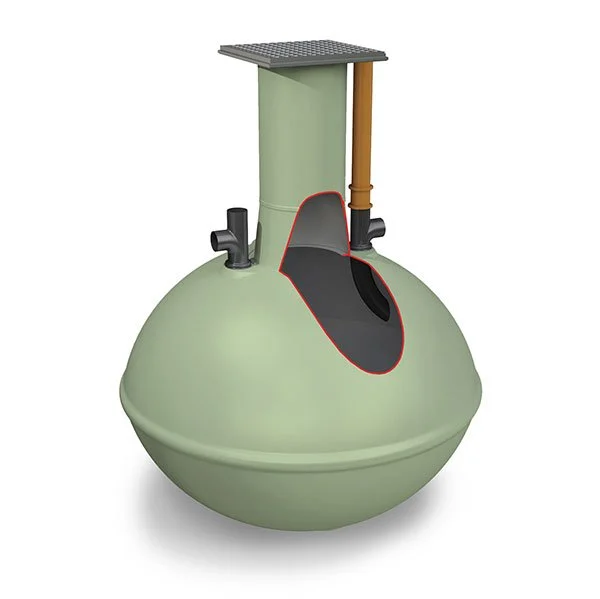
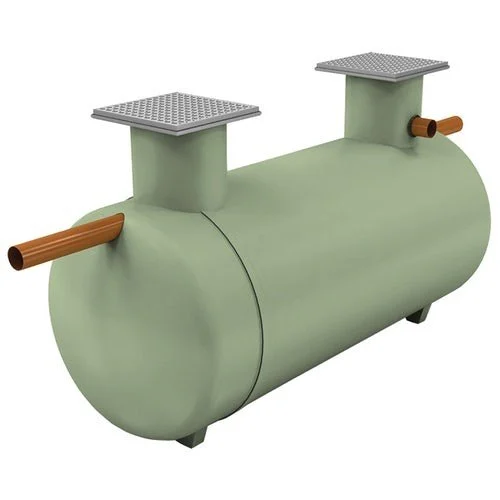
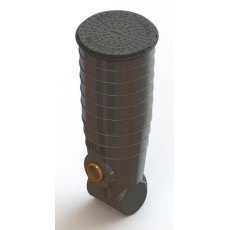
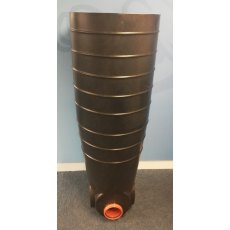

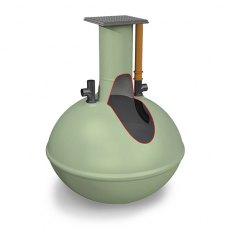

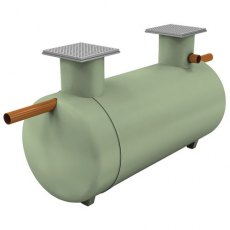
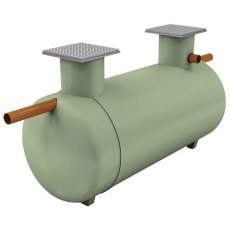
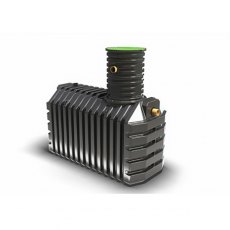
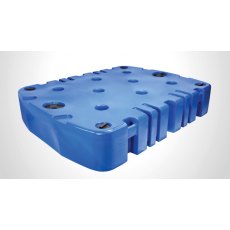
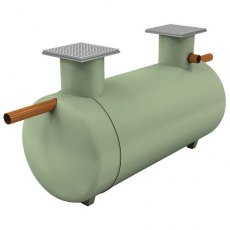
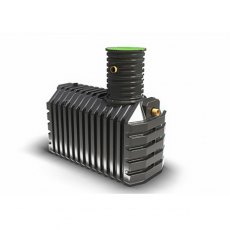
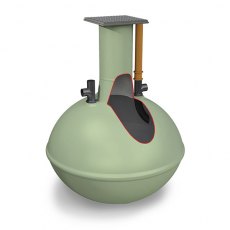
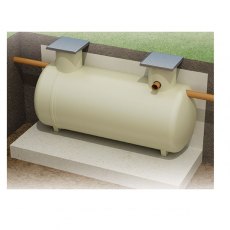
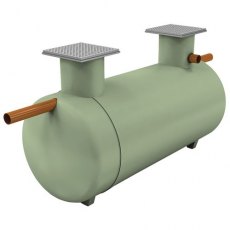
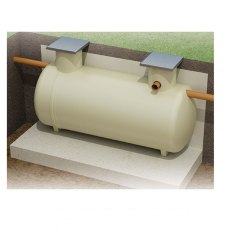
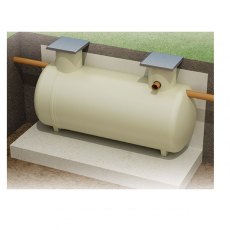
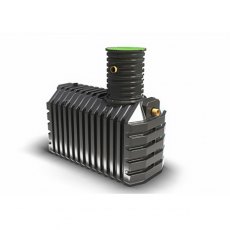
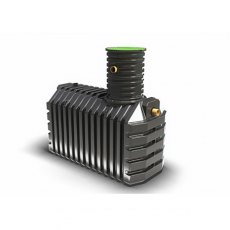
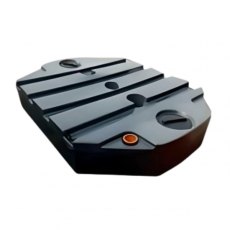
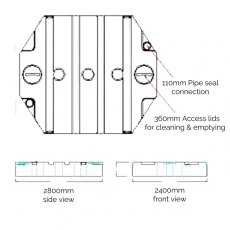
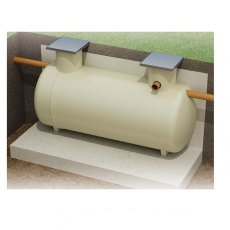

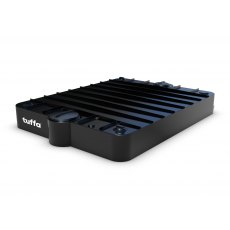
.png)
